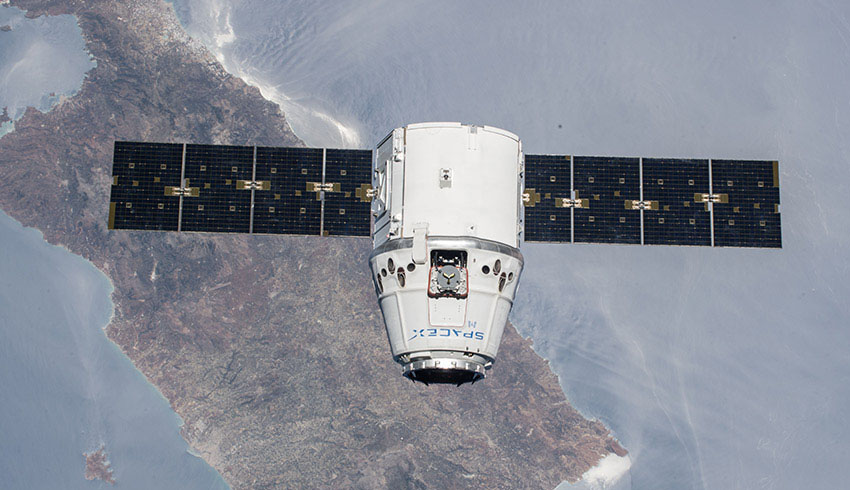The spacecraft launched on a Falcon 9 rocket from Space Launch Complex 40 at Cape Canaveral Air Force Station in Florida and is confirmed to have arrived at the orbiting laboratory on Monday, 6 May. Dragon joined five other spacecraft currently at the station.
Dragon’s launch came on the heels of robotics ground controllers in Mission Control Houston successfully completing an operation to remove a failed Main Bus Switching Unit (MBSU) aboard the ISS and replace it with a spare.
The completion of the robotics work marks the second replacement of an MBSU not involving a spacewalk. The space station continues to be a critical test bed where NASA is pioneering new methods to explore space, from complex robotic work to refueling spacecraft in flight and developing new robotic systems to assist astronauts on the frontier of space. Technologies such as these will be vital as NASA looks to return astronauts to the moon by 2024.
The scientific investigations Dragon delivered to the ISS include:
- Measuring Atmospheric CO2 from Space: NASA’s Orbiting Carbon Observatory-3 (OCO-3) examines the complex dynamics of Earth’s atmospheric carbon cycle by collecting measurements to track variations in a specific type of atmospheric carbon dioxide. Understanding carbon sources can aid in forecasting increased atmospheric heat retention and reduce its long-term risks.
- Putting Microalgae on the Menu: The Photobioreactor investigation aims to demonstrate how microalgae can be used together with existing life support systems on the space station to improve recycling of resources. The cultivation of microalgae for food, and as part of a life support system to generate oxygen and consume carbon dioxide, could be helpful in future long-duration exploration missions, as it could reduce the amount of consumables required from Earth.
- Organs on Chips Advance Human Health Research: Scientists are using a new technology called tissue chips, which could help predict the effectiveness of potential medicines in humans. Fluid that mimics blood can be passed through the chip to simulate blood flow, and can include drugs or toxins. In micro-gravity, changes occur in human health and human cells that resemble accelerated ageing and disease processes. This investigation allows scientists to make observations over the course of a few weeks in micro-gravity rather than the months it would take in a laboratory on Earth.
These are just a few of the hundreds of investigations that will help us learn how to keep astronauts healthy during long-duration space travel and demonstrate technologies for future human and robotic exploration beyond low-Earth orbit to the moon and Mars.
Space station research also provides opportunities for other US government agencies, private industry, and academic and research institutions to conduct micro-gravity research that leads to new technologies, medical treatments and products that improve life on Earth.
For more than 18 years, humans have lived and worked continuously aboard the ISS, advancing scientific knowledge and demonstrating new technologies, and making research breakthroughs not possible on Earth that will enable long-duration human and robotic exploration into deep space.
A global endeavour, more than 230 people from 18 countries have visited the unique micro-gravity laboratory that has hosted more than 2,500 research investigations from researchers in 106 countries.

